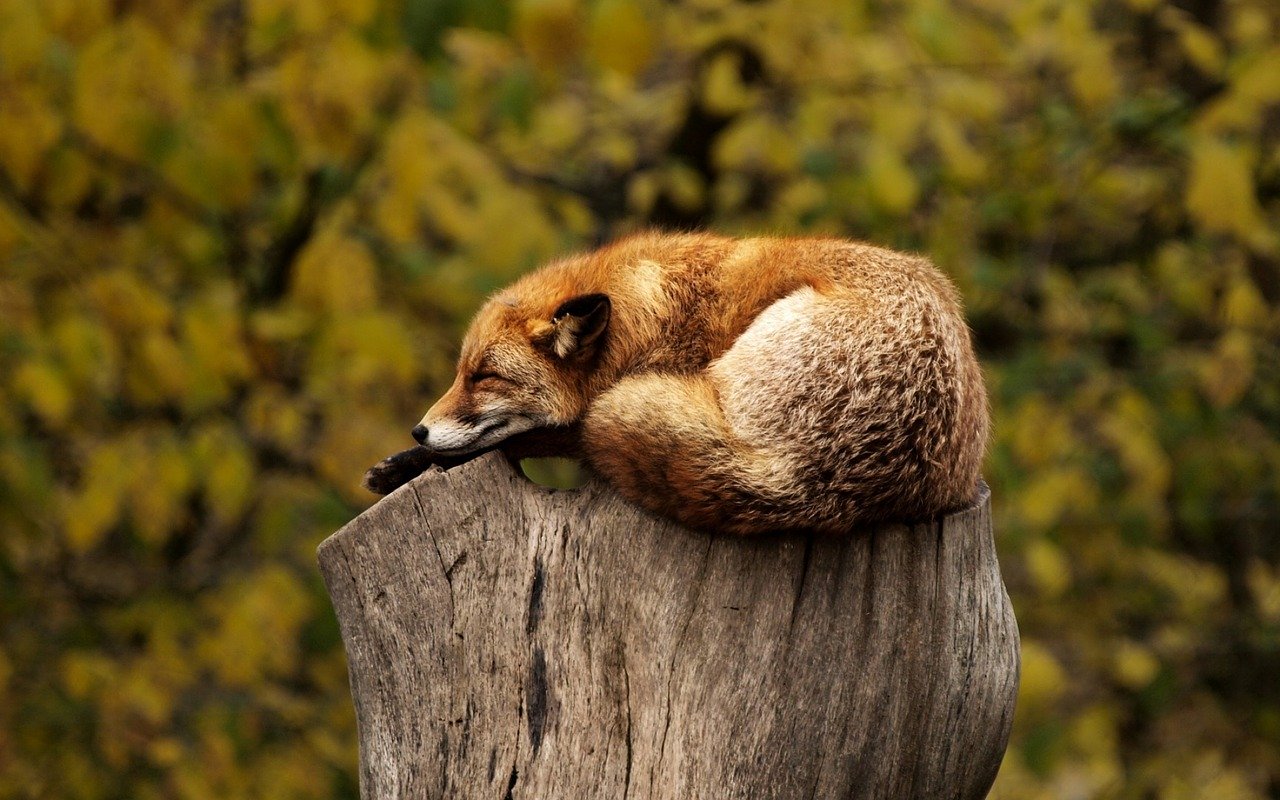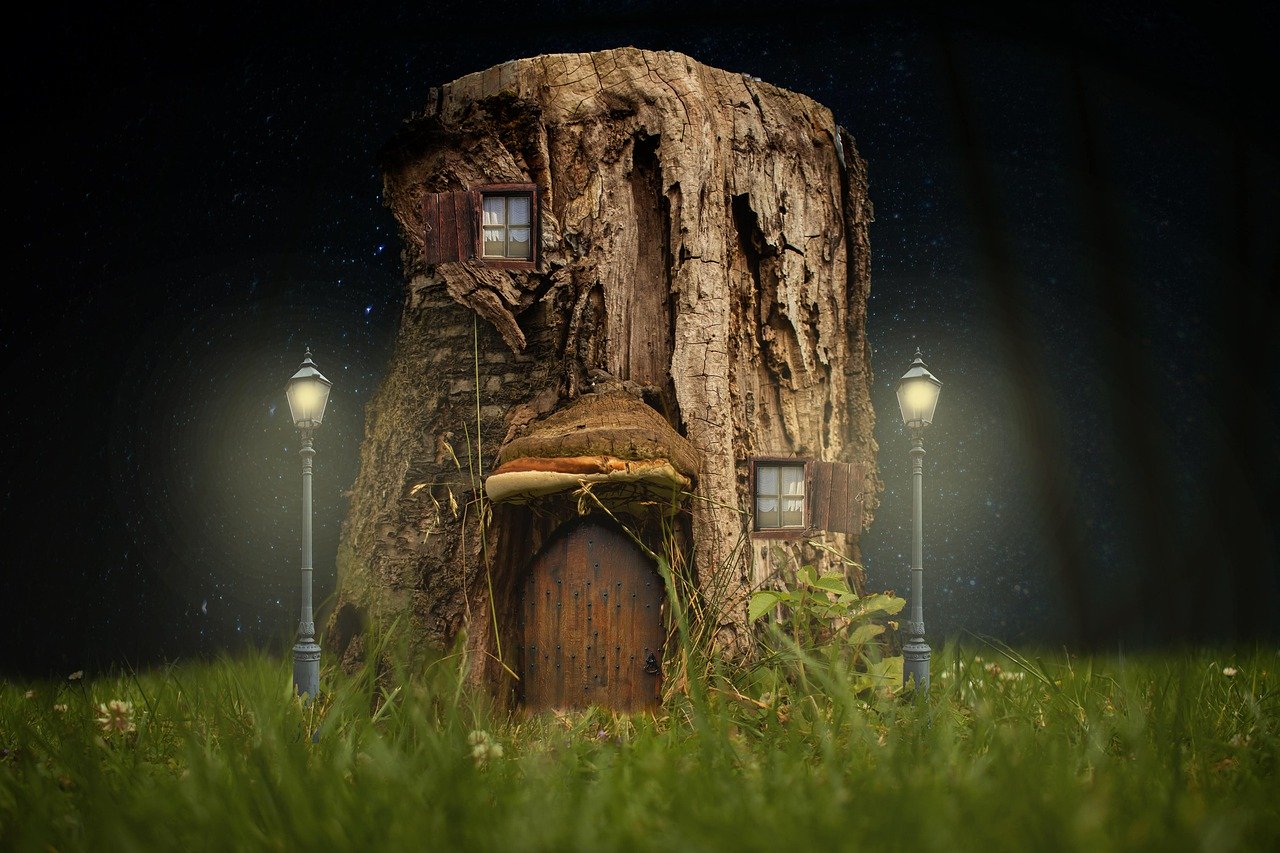
If the month of March has you seeing shamrocks, it might be a good time to brush up on your knowledge of Irish culture. The Rural Irish collection in eHRAF World Cultures is a great place to start. HRAF’s collection contains 2,347 expertly curated pages of ethnographic data across 33 documents published from 1910 to 2016. As always, HRAF anthropologists have subject-indexed each and every paragraph within this collection. In addition, an overview of the agro-pastoralist society, including language, demography, economy, kinship, social and political organization, and religion, is provided in the eHRAF Culture Summary for Rural Irish (ER06).
Irish traditional folklore is one aspect of cultural life in Ireland with a long and colorful cast of characters and symbols, many of which have been exported around the world. Lucky charms and magical creatures abound. For example, there is the infamously mischievous Leprechaun, a small bearded man who plays tricks, grants wishes, and hides his pot of gold at the end of a rainbow. The ubiquitous four-leaf clover brings luck to those who stumble upon it by chance and features prominently in St. Patrick’s Day decorations. This post will delve into Irish folklore in eHRAF World Cultures to uncover how to best to harness the renowned “luck of the Irish”, as well as how to understand it anthropologically.
Making and Keeping Luck

There is plenty of ethnographic evidence in eHRAF from rural Ireland at the turn of the 20th century about auspicious or inauspicious events. Omens are of particular salience in day-to-day life in the Irish countryside. For example, it is considered unlucky to meet a female stranger with red hair, or to encounter a hare or a fox when setting out in the morning. Conversely, a robin, stray cat, or cricket wandering into one’s home can be considered lucky (Westropp 1912: 225). The list of portents continues:
If the right ear tingles someone is praising you, and if the left someone is abusing you. If the right hand itches you will lose money, and if the left you will receive it, providing you rub or scratch it on wood. […] rubbing the right hand on wood saves the situation or the money in either case. To get dirt on one is most lucky — “the dirtier the better.” To stumble upstairs, and to be looked at by a cat after it has washed its face, are signs of approaching marriage (ibid).
Admittedly, there may be some debate as to whether the latter two omens are to be considered lucky or unlucky, but that is thankfully outside the scope of this post. Nevertheless, with all the pitfalls and opportunities alike surrounding everyday activities, how can the average Irish countryperson seek out all good omens and avoid being plagued by bad luck?
Digging deeper into Irish lore, the “Fairy-Faith” or Creideamh Sí is a local tradition comprised of rituals and superstitions surrounding the aos sí or fairies. Known to the islanders as the “little people,” “good people,” or “gentry” (Messenger, et al. 1969: 98), fairy folk are supernatural entities named after the grassy mounds that dot the Irish landscape. They are believed to live underground beneath these mounds, or in a parallel invisible world. While fairies seldom allow themselves to be seen by “regular” folk, most people – for example, on the remote island of Inis Beag – have “experienced their presence, if only through having objects mysteriously misplaced by them” (ibid. 98).

Similarly, while people in Luogh in County Clare often suggested that the cult of fairies is mere superstition, “even those who could express no views could be seen to act as if they too were believers” (Arensberg 1937: 25). After initial fervent denials of the existence of such things as fairies or fairy paths, even self-ascribed non-believers would share anecdotes, tales, and incidents illustrating the mythical characters and their purported powers for good or evil (ibid 26).
Despite their elusiveness, it is said that they “are knee-high and wear green jackets, flat red caps, and buckled shoes. The trooping fairies live in clochán and thorn bushes and spend most of their time feasting, singing, dancing, fighting, playing games, and making love” (Messenger, et al. 1969: 98). Fairy folk are imbued with so much mystical power that locals often need not refer to them by particular names:
“They call them simply ‘them’. In the pronoun they summarize both their nameless power and their immanence. No greater specification is necessary where such powers crowd so closely in upon one’s life. The acts and rituals which spring out of this belief are similarly broad in scope. They range from minor doings and turns of speech of daily life to the most hidden practices of rare and deadly black magic (Arensberg 1937: 184).
Tales of the good folk’s abilities abound. Engaging or interfering with these mystical creatures is believed to directly affect one’s life or home in myriad ways. Many daily rituals are therefore adopted in order to appease, placate, or otherwise not antagonize them. Indeed, it could be argued that in rural Irish cosmology, it is the fairies that have control over the human experience of luck and chance. That is, the luck of the Irish belongs to the fairies.
How to deal with fairies

Since the health and well-being of individuals and their families are tied to the will of the fairy folk, protective charms and ritual behaviors are introduced from a very young age. Much of daily life is influenced by fear of spiritual reprisal, down to the very foundations of the house itself. For example, Evans recounts anecdotes from two villages:
In Tyrone it is said that ‘no man would build a house till he had stuck a new spade into the earth’. If the fairies had not removed it overnight the site was safe. In Cavan I was told that a small line of stones was first built on the site: if it was intact next morning the fairies were not displeased (Evans 1957:30).
The construction ordinance instituted by the “good folk” does not stop there. Superstition surrounding the “west room” in farmhouses is likewise abundant in Irish folklore:
It is the west room and the western end of the house that the fairies frequent. Where a fairy path is believed to pass the house, it passes invariably along the western end of the house. The country people of Luogh and other parts of West Clare give this as the reason why no extensions, outhouses, sheds, or other structures are built on that side; bad luck would result. In Luogh none of the twenty-five houses of the townland had any structure of any sort built there. And it is often in this room that the fairies spend the night when they visit a house on their nocturnal travels (Arensberg, et al. 1940: 135).
Thus, according to local beliefs, the entire rural landscape remains continually under the watchful eye of fairies. To avoid an inauspicious future event or even an untimely demise, it is wise to respect the “rules” of cohabitation with all of the creatures, friendly or unfriendly as they may be. For example:
Food and water must be left for them at night. Dirty water must not be thrown out at night. For the night is a ‘lonely time’; ‘you wouldn’t like to be out in it’. The fairies are abroad. Were the water thrown out, there is danger that it might dirty them as they pass along a fairy-path or make a nocturnal visit. Then they will be angry, and disaster will follow. A hen, a pig, a cow, even a child may sicken and die (Arensberg 1937: 187).
For wives whose household task it is to mind the fire in the hearth, their final duty of the night is to smother the flames of the fire while not allowing the embers to fully go out. This custom “was fortified by the belief that the good folk, the fairies, would be displeased if there were no fire for them through the night” (Evans 1959: 71). Some claim that this practice has resulted in some fires not being allowed to go out for over a century, or for as far back as a family could remember (ibid.).

Angry, malevolent fairies represent a persistent threat to farmers and particularly to their cattle and their land, the sources of their sustenance and security. They must take all possible precautions to especially not disturb a fairy tree or fairy path. To upset their mystical neighbors is to risk miring the entire homestead in bad luck. Pregnant women have to be especially mindful of fairy magic and the risk of incurring their ire:
Mothers and babies were thought to be especially liable to be abducted by the fairies, and protective charms were hidden in a baby’s dress or placed in the cradle. When children were taken to be baptized […] parishioners would place a piece of bread and cheese in the child’s clothing. The old custom of dressing boys in girls’ clothes, in long frocks, until they were ten or eleven years of age has been explained as a means of deceiving the fairies, who were always on the lookout for healthy young boys whom they could replace by feeble ‘changelings’ (Evans 1957: 289).

Another farm chore at grave risk of fairy intervention is the churning of butter, a staple economy activity for all rural households. Healthy cows, churning milk, and producing plenty of butter for the household and for sale are all central to a farm’s survival. As a result, many rituals, prohibitions and related omens or consequences around churning behavior exist. There may even be as many otherworldly rules to follow as there are actual steps in the butter-making process. As Evans describes,
The protective charms and prognostications connected with churning are legion. If you should enter an old-style mountain kitchen when churning is in progress you may well be invited to lend a hand, or at least to ‘leave your weight on the staff,’ just to show that your intentions are not evil. There must be no bad words during churning, no quarrels, no singing or drinking: to drink anything is presumably to dilute the milk. If the milk splashes the churner is fated to marry a drunken mate. When the butter at last breaks a small ball of it is traditionally taken and smeared on the wall or tossed on top of the dresser to bring luck to the house, perhaps originally as an offering to the fairies. And when the churning is finished the staff should be twisted round three times… (1957: 305).
With so many rules to follow, it seems almost impossible to maintain a healthy farm and family, or to produce perfectly churned butter, without a great deal of luck indeed.
The moral economy of luck and chance

Is it a coincidence that the most elaborate prognostications detailed above surround the most necessary farming and household tasks for Irish country people, such as tending cattle and producing milk and butter? In understanding the true source of fairy power as depicted in local folklore, anthropologists may conclude that a belief in “fairy magic” is not entirely about invisible beings or their quirky personalities. Instead, the interconnected cosmology of magic and chance can represent a societal coping mechanism for dealing with economic risk and uncertainty. In circumstances where misfortune may likely befall one’s livestock; or an unproductive harvest or churning risks loss of income and face in the community; or a child becomes sick; or any number of unforeseen accidents takes place; the mystical rules of charms and omens can actually relieve anxiety by removing the possibility of random chance as a cause. On the contrary, fairy lore both delineates a probable cause of misfortune and codifies a set of objective guidelines for avoiding it. Luck, it can be argued, does not just arrive on the farm by chance.
For comparison, as Malinowski (1935: 217) observed among the Trobriand Islanders in his classic text Coral Gardens and Their Magic, “wherever there is an important human activity, which is at the same time dangerous, subject to chance and not completely mastered by technical means–there is always for the Trobriander a magical system, a body of rites and spells, to compensate for the uncertainty of chance and to forearm against bad luck” (emphasis added). Fairy magic among the rural Irish compensates for uncertainty in an equivalent way.
What may be missing thus far from the above accounts of malevolent fairies (i.e., spiritual agents), is human agency, inasmuch as it can account for both personal disasters and economic disparities that might occur within rural Irish communities and otherwise be attributed to fairy magic. But, according to Arensberg:
the farmer knows, too, that the fairies do not always work alone. There is often a human agency involved along with theirs. Here one enters the really dangerous ‘pisherogues’, the practices of wicked magic. A human being may perform a rite or omit a precaution in such a way as to bring about a visitation of ill-luck and disaster. He may transfer disease and sickness from his own farm to the next, he may steal the butter of another’s churn, he may destroy, steal, maim and kill by inducing the supernatural powers to commit the havoc. But sometimes the human being who brings about such a visitation upon another does so unintentionally, innocent of evil intent. A person can be either lucky or unlucky; he may tap a fairy power without meaning to (1937: 192-3).
With the addition of human intent, the role of fairy lore in the moral economy of rural society becomes more apparent. Another anthropological correlate can be found in Evans-Pritchard’s analysis of witchcraft as both a social leveling mechanism and explanatory model for misfortune in Zande society in South Sudan. In Witchcraft, Oracles, and Magic Among the Azande, Evans-Pritchard recounts how witchcraft provides people with “a natural philosophy” by which to explain unfortunate events, a means of reacting to such events, and also a system of values which regulate human conduct (1937: 63).
In Zande culture, witchcraft is ubiquitous (ibid.). Much like the invisible fairy world acting upon the rural Irish farm, it is everywhere, all the time. For the Azande, each misfortune is not attributed to random luck or chance, but to the malicious vengeance of another person projected onto someone for whom they harbor ill will. As with fairy magic, tapping this power can be determined intentional or unintentional. As a result, the belief in witchcraft itself becomes an important leveling mechanism that regulates anti-social conduct or conflict throughout society. In other words, rather than allowing anger, blame, envy, or jealousy to brew between individuals, belief in magic or witchcraft diffuses it.
Most significantly, witchcraft for the Azande – just like fairy magic or pisherogues in rural Ireland – offers the “why” behind both fortunate and unfortunate events. In a zero-sum universe, some of the most difficult things to deal with are instances of one’s own catastrophes in the face of a neighbor’s grand successes. Why them? Why not us? Moral economies of magic, however, can explain why a wonderful or terrible thing that took place happened to the person involved and not to someone else, something that the more common Western discourse of “bad luck” or “chance” does not readily do. This simple explanatory model for the uncertainties of daily life are bundled into superstitions and processed through charms, incantations, and ritual habits to protect people from the unknown, or at least with the hope that all the luck in their future will be good luck.

Next Steps
Feeling lucky? Try conducting your own research on the subject of chance, fairy magic, or sorcery in eHRAF World Cultures. If you’re not yet a member, free trials are available here.
References
Arensberg, Conrad M. (Conrad Maynadier). 1937. “Irish Countryman: An Anthropological Study.” London: Macmillan and Company Limited. https://ehrafworldcultures.yale.edu/document?id=er06-008.
Arensberg, Conrad M. (Conrad Maynadier), Solon Toothaker Kimball, and W. Lloyd (William Lloyd) Warner. 1940. “Family And Community In Ireland.” Cambridge, Mass: Harvard University Press. https://ehrafworldcultures.yale.edu/document?id=er06-001.
Evans, E. Estyn (Emyr Estyn). 1957. “Irish Folk Ways.” London: Routledge and Paul. https://ehrafworldcultures.yale.edu/document?id=er06-013.
Evans-Pritchard, E. E. (Edward Evan). 1937. “Witchcraft, Oracles And Magic Among The Azande.” Oxford: Clarendon Press. https://ehrafworldcultures.yale.edu/document?id=fo07-071.
Taylor, Lawrence J. 2016. “Culture Summary: Rural Irish.” New Haven: Human Relations Area Files. https://ehrafworldcultures.yale.edu/document?id=er06-000.
Malinowski, Bronislaw. 1935. “Coral Gardens And Their Magic: A Study Of The Methods Of Tilling The Soil And Of Agricultural Rites In The Trobriand Islands. Vol. Two, The Language Of Magic And Gardening.” New York: American Book Company. https://ehrafworldcultures.yale.edu/document?id=ol06-003.
Messenger, John C. (John Cowan), George Dearborn Spindler, and Louise S. Spindler. 1969. “Inis Beag: Isle Of Ireland.” Case Studies In Cultural Anthropology. New York: Holt, Rinehart and Winston. https://ehrafworldcultures.yale.edu/document?id=er06-016.
Westropp, Thomas J. (Thomas Johnson). 1912. “Folklore Survey Of County Clare.” Folk-Lore 21: HRAF pagination: 180–271 [original: Vol. 21, 180–99, 338–49, 476–87 ; Vol. 22, 203–13, 332–41, 449–56 ; Vol. 23, 88–94, 204–15]. https://ehrafworldcultures.yale.edu/document?id=er06-014.